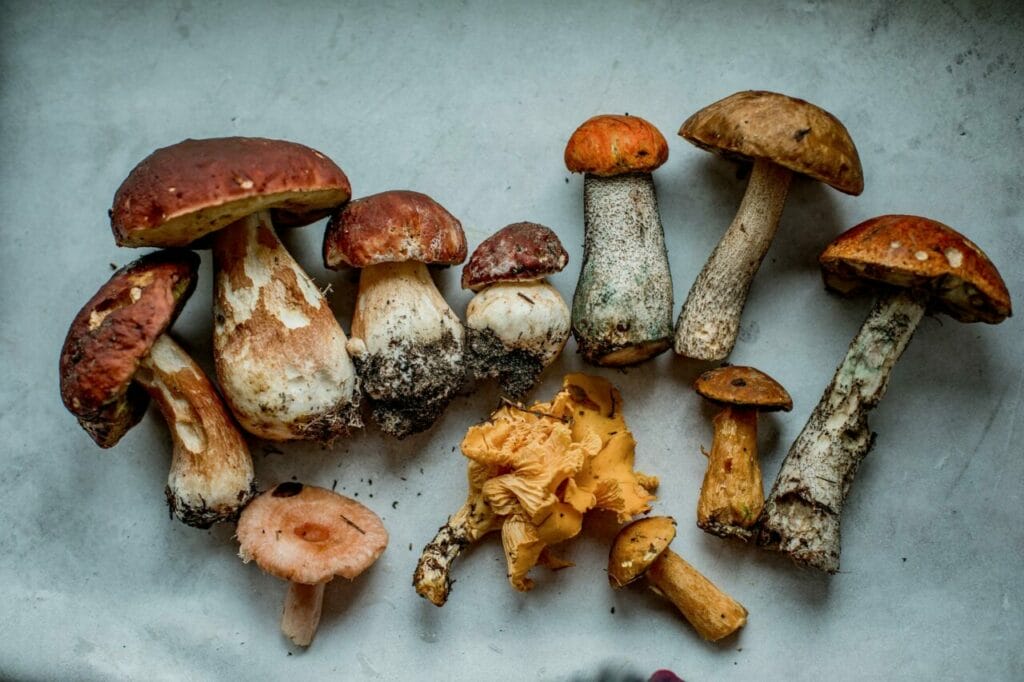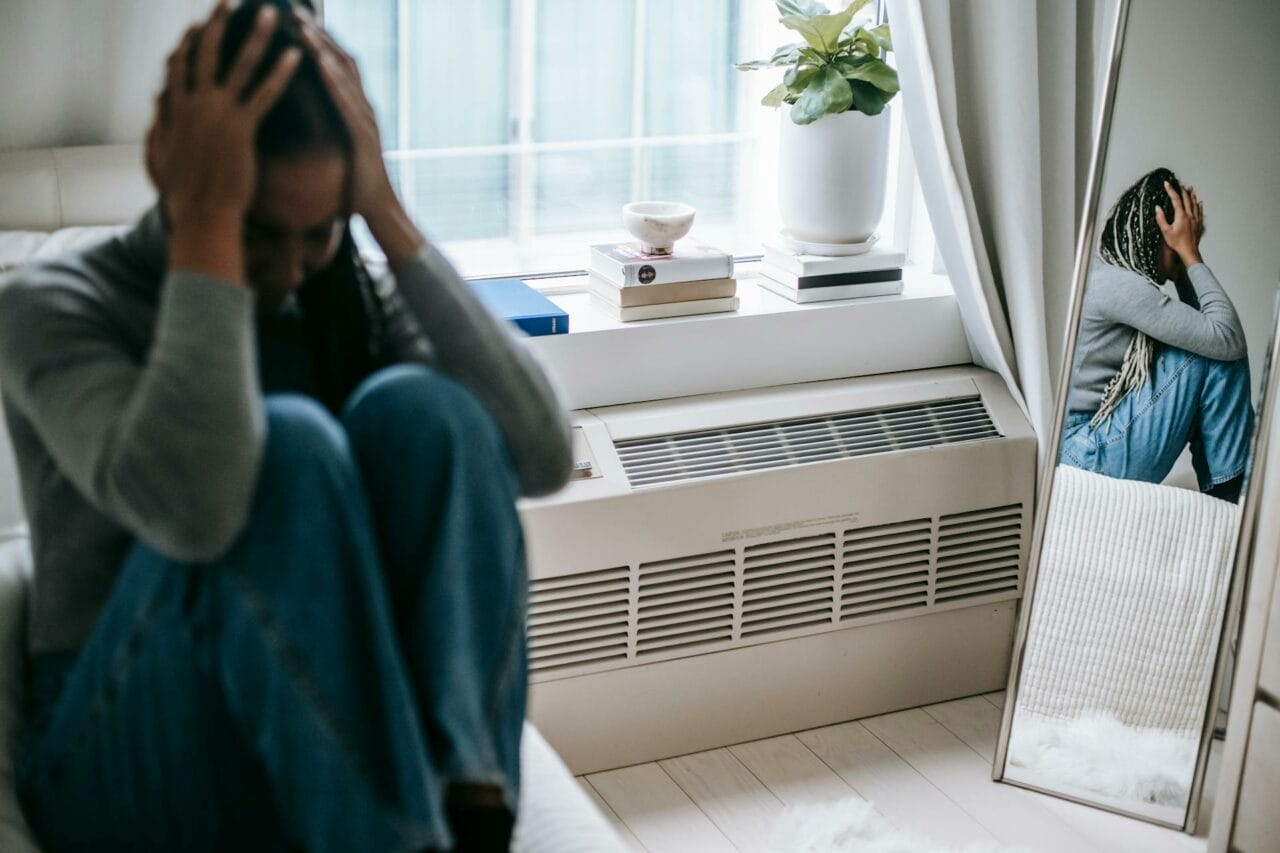Conventional treatment for anxiety usually involves medication and therapy. However, they may not work for everyone due to potential side effects. These issues have led to a growing interest in alternative solutions such as psychedelic therapy, which makes use of substances like “magic mushrooms Montreal” among others.
Welcome to your premier destination to buy psychedelics online in Canada. We provide quick, secure, and discreet services.
[toc]Key Points:
- Psychedelic therapy combines the healing properties of psychedelic substances with traditional talk therapy to facilitate the recovery process.
- Through spiritual journeys, psychedelic therapy can promote emotional well-being and enhance overall quality of life.
- The process of integration is a vital aspect of psychedelic therapy, designed to ensure the enduring effectiveness of the therapy sessions.

Statistics on Anxiety Disorder in Canada
The 2022 Mental Health and Access to Care Survey data reveals a concerning increase in the prevalence of anxiety disorders in Canada. The percentage of Canadians, aged 15 and above, diagnosed with generalized anxiety disorder in the 12 months prior to the survey has risen from 2.6% in 2012 to 5.2% in 2022.
Contrasting Traditional Treatment with Psychedelic Therapy
Standard treatments for anxiety disorders typically involve a combination of psychotherapy and medication. Psychotherapy, also referred to as psychological counseling, is a collaborative process between a therapist and the patient to alleviate anxiety symptoms.
On the other hand, anxiety medications help to relieve symptoms by tailoring treatment to the specific type of anxiety disorder and considering any concurrent mental or physical health issues. While treatment may differ based on individual situations, the fundamental approaches are psychotherapy and medication.
In psychedelic therapy, sessions are unique as they include one or two doses of a psychedelic substance, coupled with other therapeutic techniques.
Techniques:
Psychedelic Therapy Explored
Psychedelic therapy refers to a therapeutic approach that capitalizes on the beneficial properties of psychedelic substances to boost the therapeutic process. Known for their hallucinogenic properties, these substances have been integral to holistic healing and spiritual rituals in diverse cultures for millennia.
The two substances most frequently used in this therapy are Lysergic acid diethylamide (LSD) and psilocybin. LSD induces alterations in mood, perception, and consciousness. Psilocybin, according to the Health Canada website, is the active ingredient in magic mushrooms. Consuming these mushrooms can trigger sensory experiences, such as visual, auditory, or tactile hallucinations.
Dosage Guidelines for Multiple Sessions
In psychedelic therapy, specialists assess patients to determine the appropriate dosage of psilocybin for their sessions. Dosage can range from moderate to high, depending on the patient’s tolerance. The treatment plan usually comprises one to three medication sessions, each spanning six to eight hours and spaced weeks apart. This method differs from traditional medications, which require daily intake until a healthcare professional advises otherwise.
Encountering Spiritual Transformation
Anxiety medications are designed to control symptoms, while therapy aims to tackle the root causes of the disorder. Unlike these medications, psychedelic therapy can profoundly impact emotional well-being and life quality.
The immersive experiences induced by this therapy can lead to profound realizations, increased self-understanding, and enhanced emotional processing. These impacts can stimulate personal development, inspire positive behavioral changes, and enhance mental health in general.
Impacts
| Expanded Consciousness | Altered states of consciousness offer a renewed outlook on life. | Such heightened awareness often results in the following: Deep realizationsEnlightening experiencesEnhanced comprehension of oneself and the surrounding environment |
| Emotional Healing | Supports emotional healing by creating an opportunity to face and process unresolved trauma, grief, or emotional pain. | This procedure aids in:Unearthing deeply embedded emotionsReleasing emotional setbacksPromoting emotional health |
| Increased Self-Awareness | Enhances the connectivity among sensory brain regions while reducing connectivity within the default mode network. This network integrates brain regions that are interconnected, focusing on self-referential thinking and the individual’s subjective self-perception.” | The purpose of these regions is to: Modify negative cognitive patterns, beliefs, and habitual behaviours. Empower users to gain profound insights into their authentic selves, motivations, and interpersonal exchanges. |
Somatic Therapy
Although not typically linked with psychedelic therapy, Somatic therapy is acquiring recognition for its potential benefits. This body-centered approach explores the connection between the mind and body. It’s grounded in the belief that past traumas can result in sensations being held in the body. Somatic therapists help individuals identify these physical sensations and use therapeutic methods to alleviate this tension.
Integration
This creates an environment for clients to attain clarity, gain perspective, and cultivate wisdom from their psychedelic experiences. The transformative process occurs during integration sessions with the therapist and through the client’s proactive actions outside of psychedelic journeys. Integration enhances the transformative effects of psychedelics by actively engaging with emerged insights and emotional revelations.
Types of Integration
- Journaling. Documenting experiences helps individuals solidify memories for easier future recall. It also enables clients to examine their experiences from various perspectives to discover different interpretations, meanings, and connections.
- Art. Art provides an efficient way to capture the complex emotions and feelings of a psychedelic journey in a creative and visually expressive manner.
- Practicing Nature-based Approaches. These can be as simple as mindfully walking in the woods or finding peace beside a tranquil body of water. Therapists can help clients recognize the intricate patterns in nature or suggest the use of natural elements like plants, stones, water, and candles as grounding tools.
- Participating in Integration Groups. Group sessions with individuals sharing similar experiences offer a significant platform for reflection, support, and connection. The capacity of psychedelic therapy to foster a sense of interconnectedness and mutual understanding beyond individual limitations is fundamental.
The Impact of These Techniques in Anxiety Treatment
The underlying pharmacological principle behind all psychedelics is their ability to act as agonists, or activators, of serotonin (5-HT) 2A
Deeply rooted in the field of psychedelic research is a key focus on their effects on the brain’s default mode network. This network is notably involved in recurrent thoughts and is associated with conditions such as depression and anxiety disorders. Treatment has shown to significantly reduce anxiety levels, with the effects lasting as long as 12 months after treatment.
After experiencing a psilocybin session, which often includes intense spiritual encounters, the patient participates in a conversation with their therapist. These therapy sessions involve trained healthcare providers who attentively listen to the patient and employ specific practices and techniques to enhance the positive outcomes of the treatment.
These techniques collaboratively work to assist individuals suffering from anxiety to achieve long-lasting relief in fewer sessions than conventional treatments.
Your Transformation Journey, One Session at a Time
Many people rely on traditional anxiety treatments, but not everyone finds them effective or satisfying. Psychedelic therapy presents an alternative, employing unique methods that can trigger transformative experiences. These methods work in harmony to bring about significant, long-lasting results—sometimes up to a year after just one to three sessions.
Beyond improving mental health, this therapy could also offer significant cost savings for patients. Interested in exploring a new path to wellness? Discover the potential of psychedelic therapy with Shroom Store Canada.
Frequently Asked Questions
Is a specific type of magic mushroom used for psychedelic therapy?
Often overlooked in psychedelic-assisted therapy studies is the specifics of the type of mushroom used. Psilocybe cubensis is generally the mushroom of choice.
Online magic mushroom dispensaries offer a variety of strains catered to different preferences. You have the freedom to choose any strain to experience the therapeutic benefits of psychedelics. However, it’s important to exercise caution and select a trustworthy vendor to avoid obtaining unsafe magic mushrooms from dubious sources.
What is the duration of psychedelic therapy?
The duration of psychedelic therapy can vary as it involves several stages. A single session where the psychedelic is taken lasts between 4 to 8 hours. The complete therapy process, which includes preparation, the session, and follow-up discussions, can span from a few weeks to several months.
As for long-term effects, individuals have reported improvements in their mental health for several months or even up to a
Several sessions are incorporated within a year.
Does the therapist guide the patient on a spiritual journey?
During this stage, experts such as therapists or other members of the staff may accompany the patient on their journey. Studies suggest that Spiritual Health Practitioners (SHPs) contribute uniquely and beneficially to improve participants’ well-being and support their advancement during a spiritual journey. Some people choose to engage the services of an SHP, while others rely on the therapist or specialist at hand.
Does the “set and setting” play a role in psychedelic therapy?
Yes, both the individual’s mindset (set) and the physical surroundings (setting) play a vital role in safely orchestrating spiritual experiences during a psychedelic therapy session. The person’s mental state crafts their spiritual journey, impacting the experience both before and throughout the psychedelic session. Aspects such as beliefs, expectations, emotional states, and intentions determine the course and intensity of the experience.
Primary Source: Psychedelics as Emerging Treatments for Anxiety Disorders: Opportunities and Challenges in a Budding Field – PMC (nih.gov)
About the Authors:
Franklin King, IV, MD. and Rebecca Hammond, M.D.
Related Articles:





